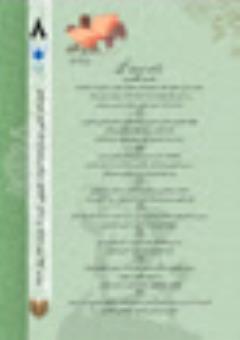دیالکتیک سنّت و مدرنیته در ادبیات سیاسی ایران؛ بررسی تطبیقی دو داستان «فارسی شکر است» و «رجل سیاسی»
محورهای موضوعی : ادبیات تطبیقی (فارسی- انگلیسی)
سمیه علی اکبر زاده
1
![]() ,
ماندانا علیمی
2
*
,
علی فلاح
3
,
ماندانا علیمی
2
*
,
علی فلاح
3
1 - دانشجوی دکتری گروه زبان و ادبیات فارسی، واحد گرگان، دانشگاه آزاد اسلامی، گرگان، ایران.
2 - گروه زبان وادبیات فارسی،واحد آزادشهر،دانشگاه آزاداسلامی ،آزادشهر،ایران
3 - استادیار گروه زبان و ادبیات فارسی، دانشکده علوم انسانی، واحد گرگان، دانشگاه آزاد اسلامی، گرگان، ایران.
کلید واژه: جمالزاده, دیالکتیک, سنّت, مدرنیته, فارسی شکر است, رجل سیاسی.,
چکیده مقاله :
یکی از مفاهیم مهم ادبیات سیاسی ایران جدال و دیالکتیک سنّت و مدرنیته است. درواقع میتوان اذعان داشت دو عامل اصلی استبداد و عقبماندگی جامعة سیاسی حاصل جدال سنّت و مدرنیته بوده است. در این رابطه، بسیاری از نویسندگان ادبیات فارسی، به¬ویژه از عصر مشروطه به بعد، در آثار نظم و نثر خود با بهرهگیری از شیوههایی همچون طنز، اوضاع سیاسی اسفناک ایران را ترسیم کردهاند. یکی از نویسندگان مشهوری که در آثار خود همواره با بیانی مبتنی بر طنز، اوضاع سیاسی ایران را به نقد کشیده است، محمّدعلی جمالزادة اصفهانی بوده است. وی در آثار ادبی خود، بارها آشفتگی سیاسی- فرهنگی جامعة ایران اعمّ از حاکمین و طبقات مختلف مردم را ترسیم کرده است. در این مقاله، نویسندگان در تلاشند تا با استفاده از روش تطبیقی دو اثر جمالزاده با عناوین «رجل سیاسی» و «فارسی شکر است» را با بهره¬گیری از طنز سیاسی بررسی نمایند و به این سوال اصلی پاسخ دهند: «جمالزاده جدال سنّت و مدرنیته را در دو داستان رجل سیاسی و فارسی شکر است چگونه و در قالب چه مفاهیمی دسته بندی نموده است؟» فرضیة مقاله تأکیدی است بر این موضوع که این دو اثر جمالزاده عمدتاً با محوریت طنز و گفتمان انتقادی و با هدف اصلاح اوضاع آشفتة سیاسی و اجتماعی و فرهنگی جامعة خود صورت پذیرفته است. یافتههای مقاله نشان داد جمالزاده در داستان «فارسی شکر است» چهار مفهوم کلان نهادینگی استبداد و فساد؛ سیاستزدگی جامعة ایران، شکاف عمیق طبقاتی و دیالکتیک فرهنگ وارداتی و هویت سنّتی را نشان میدهد. اما در داستان رجل سیاسی، جمالزاده به بررسی جامعة ایران در زمان و شرایط خاصی میپردازد و به افتادن سرنوشت مردم به دست کسانی اشاره دارد که اصلاً تخصصی ندارند. در این راستا، سیاست به مثابۀ ثروت و رفاه، فقدان مریتوکراسی، لمپنیسم سیاسی، عدم فهم مسائل سیاسی و فقدان تخصص، ناپایداری تودهها در قالب «جو زدگی سیاسی، تشجییع سیاسی و قهرمانسازی نادرست و لابیگری سیاسی مهمترین مواردی است که جمالزاده بدان اشاره نموده است.
Mohammad Ali Jamalzadeh Esfahani is one of the famous writers who has always criticized Iran's political situation in his works with humor. In this article, the authors try to use the comparative method of Jamalzadeh's two works with the titles "Farsi Shekar ast" and "Rajale Siasi" by using political satire and answer this main question: "How and in what concepts have categorized the conflict between tradition and modernity by Jamalzadeh in the two stories of the Farsi Shekar ast and Rajole Siasi?" The hypothesis of the article emphasizes that these two works of Jamalzadeh are mainly based on humor and critical discourse, with the aim of correcting the chaotic political, social, and cultural situation of his society. The findings showed that Jamalzadeh's story "Farsi Shekar ast" has four macro institutional concepts of tyranny and corruption; the politicization of Iranian society shows the deep class divide and the dialectic of imported culture and traditional identity. But in the story of "Rajole Siasi", Jamalzadeh examines the society of Iran in certain times and conditions and refers to the fate of the people falling into the hands of those who have no expertise at all. In this regard, politics as wealth and prosperity, lack of meritocracy, political vulgarization, lack of understanding of political issues and lack of expertise, instability of the masses in the form of "political atmosphere, political encouragement and false heroization and political lobbying are the most important things that Jamalzadeh mentioned.

